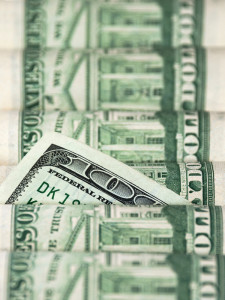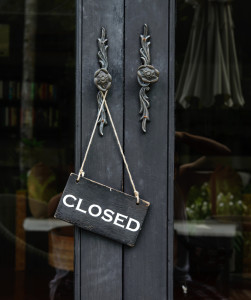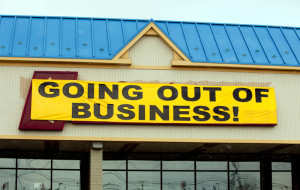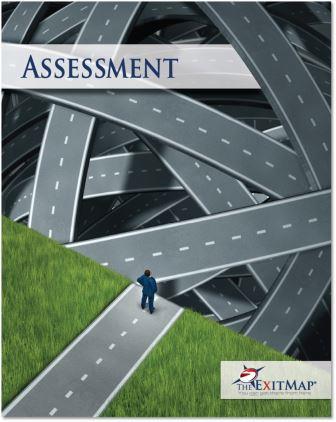Your ExitMap Blog gathers contributions from top exit planning professionals across the country that are indexed into four categories. They include select strategies for planning your exit, ideas for building your company’s value, transfer options you can choose from, or preparing to enjoy your post-exit lifestyle. This page shows the most recent posts from Your ExitMap Blog. If you are seeking a qualified exit planning professional, you can view a map of specialists here.
All articles are copyrighted by the authors, and reprinted here with permission. Each author’s contact information is available via a link at the end of the article.
Most Recent Your ExitMap Blog Articles
Most Recent Blog Articles
Money is Only Money Last week I discussed the general parameters of the private equity market for small and midsized businesses. A rational look at the number of “funds” active in the market, measured against the number of legitimate candidates for investment or acquisition, paints a clear view of why so many small companies are receiving calls from interested investors. There simply aren’t enough profitable, growing companies to buy. I put “funds” in quotes because not all Private Equity Groups are funds. There is a big difference between “We have money” and “We can get money.” Your first questions to any purported acquirer should be about the source and condition of their ... Read more Last week I discussed the general parameters of the private equity market for small and midsized businesses. A rational look at the number of “funds” active in the market, measured against the number of legitimate candidates for investment or acquisition, paints a clear view of why so many small companies are receiving calls from interested investors. There simply aren’t enough profitable, growing companies to buy. I put “funds” in quotes because not all Private Equity Groups are funds. There is a big difference between “We have money” and “We can get money.” Your first questions to any purported acquirer should be about the source and condition of their ... Read more Investing in Your Own Business: Will It Pay Off? A few months ago a business owner asked me to evaluate an acquisition offer for his small business. It was from a larger company headquartered in a different region of the country. They had a branch operation in his city, and wanted to expand their presence by combining it with his. For an opening offer, the deal seemed very reasonable to me. The purchase price was about four times EBITDA, with half in cash and half with interest over the next three years, and without any conditions attached. (note: That doesn’t mean conditions wouldn’t have come later.) He would receive a three-year employment agreement at a higher salary than he currently paid himself, ... Read more A few months ago a business owner asked me to evaluate an acquisition offer for his small business. It was from a larger company headquartered in a different region of the country. They had a branch operation in his city, and wanted to expand their presence by combining it with his. For an opening offer, the deal seemed very reasonable to me. The purchase price was about four times EBITDA, with half in cash and half with interest over the next three years, and without any conditions attached. (note: That doesn’t mean conditions wouldn’t have come later.) He would receive a three-year employment agreement at a higher salary than he currently paid himself, ... Read more Key Man Policies May Not Cover a Buy/Sell Agreement Over the last few weeks, I’ve had a number of conversations with clients about key man insurance. Let me say at the outset that I don’t sell insurance, and have no financial stake in whether any client has coverage or not. The use of such policies, however, may not always fit their intended purpose, especially in smaller companies. The most common intended purpose of a key man policy is to fund a buy/sell agreement. The benefit payment goes to the company, which in turn uses the proceeds to purchase ownership from the family or estate of the deceased. If it works that way, it’s an ... Read more Over the last few weeks, I’ve had a number of conversations with clients about key man insurance. Let me say at the outset that I don’t sell insurance, and have no financial stake in whether any client has coverage or not. The use of such policies, however, may not always fit their intended purpose, especially in smaller companies. The most common intended purpose of a key man policy is to fund a buy/sell agreement. The benefit payment goes to the company, which in turn uses the proceeds to purchase ownership from the family or estate of the deceased. If it works that way, it’s an ... Read more Where Will All the Small Businesses Go? What would the small business landscape look like if over one million small businesses disappeared? Get ready, it’s about to happen. I write and speak frequently about the passing of the entrepreneurial generation. Driven by competitive pressures to succeed, the Boomers became small business owners in unprecedented numbers not seen since. They now account for about 2/3 of all the small employers (under 500 workers) in the United States. The two generations that follow, the Xers and Millennials, don’t have the capital, the material ambitions, or the need to chase the Boomers into small business. For a free download of my ten-article series on this transition, go ... Read more What would the small business landscape look like if over one million small businesses disappeared? Get ready, it’s about to happen. I write and speak frequently about the passing of the entrepreneurial generation. Driven by competitive pressures to succeed, the Boomers became small business owners in unprecedented numbers not seen since. They now account for about 2/3 of all the small employers (under 500 workers) in the United States. The two generations that follow, the Xers and Millennials, don’t have the capital, the material ambitions, or the need to chase the Boomers into small business. For a free download of my ten-article series on this transition, go ... Read more What is Your Company Worth? II Last week we discussed how business owners frequently use hearsay or incomplete information to estimate the value of their companies. They give the number to their financial planner, or include it on a personal financial statement for their banker, neither of whom bat an eyelash at the estimate. Having the amount “accepted” by financial experts, the owner starts to treat it as fact. How do you know whether it is realistic or achievable? Valuation of a small business is a combination of art and science. No two small companies are alike. A multiple of profits or cash flow is only the starting point. Take two small companies, ... Read more Last week we discussed how business owners frequently use hearsay or incomplete information to estimate the value of their companies. They give the number to their financial planner, or include it on a personal financial statement for their banker, neither of whom bat an eyelash at the estimate. Having the amount “accepted” by financial experts, the owner starts to treat it as fact. How do you know whether it is realistic or achievable? Valuation of a small business is a combination of art and science. No two small companies are alike. A multiple of profits or cash flow is only the starting point. Take two small companies, ... Read more Ready...Set...Exit! Part II Last week we discussed the tsunami of Baby Boomer retirement, and how we will reach a peak of nearly 500 unsold businesses a day within the next 5 years. The statistics are immutable. The birthrates of the last century are fixed in stone. (If you haven’t read my e-book Beating the Boomer Bust you can get it for free here. Use the download code “Woodstock”.) Once you understand the inevitability of competing to sell your business in a buyer’s market, you have five choices. The first is to simply ignore it and hope for the best. For any owner who holds most of his or her ... Read more Last week we discussed the tsunami of Baby Boomer retirement, and how we will reach a peak of nearly 500 unsold businesses a day within the next 5 years. The statistics are immutable. The birthrates of the last century are fixed in stone. (If you haven’t read my e-book Beating the Boomer Bust you can get it for free here. Use the download code “Woodstock”.) Once you understand the inevitability of competing to sell your business in a buyer’s market, you have five choices. The first is to simply ignore it and hope for the best. For any owner who holds most of his or her ... Read more Ready...Set...Exit! Part I For the last six years I’ve been writing and speaking around the country to business owners about the coming tsunami of retiring Baby Boomer business owners. My e-book “Beating the Boomer Bust” details the statistics (For a free download, go here and enter the seminar attendee password “Woodstock”), but the numbers are inescapable. According to www.bizbuysell.com the brokerage industry reports the sale of less than 8,000 small (under 500 employees) companies each year. There are between five million and six million such businesses in the USA that are owned by Boomers between 48 and 68 years old. That makes business owners about 7% of the Boomer generation (78,000,000). By ... Read more For the last six years I’ve been writing and speaking around the country to business owners about the coming tsunami of retiring Baby Boomer business owners. My e-book “Beating the Boomer Bust” details the statistics (For a free download, go here and enter the seminar attendee password “Woodstock”), but the numbers are inescapable. According to www.bizbuysell.com the brokerage industry reports the sale of less than 8,000 small (under 500 employees) companies each year. There are between five million and six million such businesses in the USA that are owned by Boomers between 48 and 68 years old. That makes business owners about 7% of the Boomer generation (78,000,000). By ... Read more Can Franchising Survive The Baby Boomers? As a consultant to business owners, this is a column I’ve hesitated to write for a long time. There are over 800,000 franchised businesses in the United States, and I’m not going out of my way to make that many owners mad at me. Since I often write and I speak nationally about the trends of Baby Boomer businesses, however, I frequently wonder whether the franchise business model can survive another generation in its current form. A quick recap of franchising in the USA. “Business Model Franchising” (the sale of a turnkey concept) began in the 1940’s with KFC, A&W and Howard Johnson’s. In 1975 the first Boomers ... Read more As a consultant to business owners, this is a column I’ve hesitated to write for a long time. There are over 800,000 franchised businesses in the United States, and I’m not going out of my way to make that many owners mad at me. Since I often write and I speak nationally about the trends of Baby Boomer businesses, however, I frequently wonder whether the franchise business model can survive another generation in its current form. A quick recap of franchising in the USA. “Business Model Franchising” (the sale of a turnkey concept) began in the 1940’s with KFC, A&W and Howard Johnson’s. In 1975 the first Boomers ... Read more Boomer Business Owners' Retirement Accelerates Pepperdine University, in cooperation with the International Business Brokers Association and the M&A Source, publishes a quarterly Market Pulse Survey on the sale of small businesses in the United States. The most recent report, covering the fourth quarter of 2012, shows that “retiring Baby Boomers” is for the first time the number one reason for selling a small business in the United States. I’ve written since 2007 in this space and elsewhere about the impact of Boomer business owners leaving their companies. You can download my e-book on the subject at www.theboomerbust.com. (The password for my faithful readers is “Woodstock.”) The Market Pulse Survey is ... Read more Pepperdine University, in cooperation with the International Business Brokers Association and the M&A Source, publishes a quarterly Market Pulse Survey on the sale of small businesses in the United States. The most recent report, covering the fourth quarter of 2012, shows that “retiring Baby Boomers” is for the first time the number one reason for selling a small business in the United States. I’ve written since 2007 in this space and elsewhere about the impact of Boomer business owners leaving their companies. You can download my e-book on the subject at www.theboomerbust.com. (The password for my faithful readers is “Woodstock.”) The Market Pulse Survey is ... Read more The Road Less Traveled Somewhere ages and ages hence: Two roads diverged in a wood, and I, I took the one less traveled by, And that has made all the difference. Perhaps Robert Frost’s famous poem isn’t a perfect expression of what I am trying to convey, but the idea he expressed has been ingrained in us (the Boomers- I think Maya Angelou has replaced Frost as required poetry reading in schools) enough to serve my point. Some thousands of business owners have heard my presentation on the inevitable issues of selling Boomer businesses. Hopefully, even more will hear it in the future. Many have read my column, caught me on the ... Read more Somewhere ages and ages hence: Two roads diverged in a wood, and I, I took the one less traveled by, And that has made all the difference. Perhaps Robert Frost’s famous poem isn’t a perfect expression of what I am trying to convey, but the idea he expressed has been ingrained in us (the Boomers- I think Maya Angelou has replaced Frost as required poetry reading in schools) enough to serve my point. Some thousands of business owners have heard my presentation on the inevitable issues of selling Boomer businesses. Hopefully, even more will hear it in the future. Many have read my column, caught me on the ... Read more |
|
Keystone Content: Are you just beginning your exit planning journey? Here are two short articles from Your ExitMap Blog to help get you started. 3 Inarguable Reasons How prepared are you to Take a FREE 15-minute FIND A QUALIFIED EXIT PLANNER |




